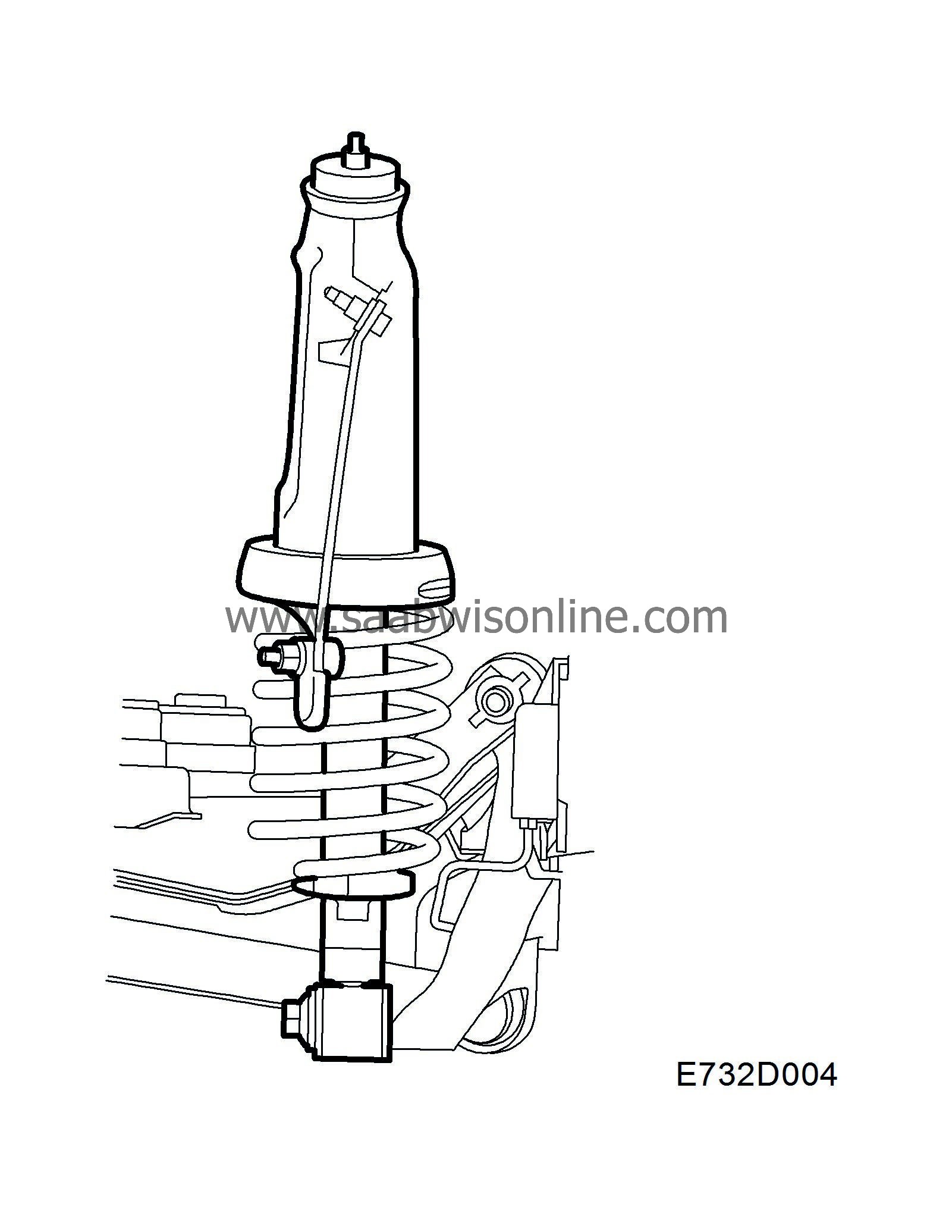Dampers
| Dampers |
The gas pressure in the damper is used to maintain pressure on the damper fluid. This pressure reduces the foaming tendency of the fluid. It also counteracts formation of air bubbles that can result in noisy operation of the damper.
The maximum extension stop for the spring is incorporated into the damper.
Spring and damper are mounted together on a bracket which is bolted to the wheel housing.
| Automatic levelling shock absorber |
Saab 9-5 can be equipped with automatic levelling shock absorbers as an option/accessory. These shock absorbers automatically adjust the spring travel to the weight of the car.
Function
The Nivomatic system's rear shock absorbers and springs are a self-regulating hydro-pneumatic suspension and damper system.The self-regulating system automatically maintains an optimum chassis level. This levelling system is different in that the energy required to adjust the chassis position is obtained from the relative movement between the axle and the body that takes place in normal driving conditions. Consequently, the self-adjusting levelling system requires no other source of power.
The rear suspension becomes compressed by the extra weight. As soon as the vehicle starts moving, the relative movement between the axle and the body pumps oil in the low pressure chamber towards the gas cushion in the high-pressure accumulator (parallel with the chassis spring).
As the piston rod is extended, oil is drawn into the pump through the intake valve and as it contracts, the oil is pumped into the high-pressure accumulator through an outlet valve. The increased pressure in the high pressure accumulator acts on the cross-sectional area of the piston rod to achieve the extra force that is needed to counteract the increased rate of suspension travel of the system, which provides a more constant chassis level. At this stage, the height regulator opens a bypass channel to prevent any further increase in the oil pressure. The oil returns to the low pressure chamber through a drain passage.
The piston rod is hollow and contains a control valve, which, together with the fixed pump rod and the non-return valves in the inlets and outlets, constitutes the pump. The gas and oil inside the high-pressure chamber are separated by a diaphragm. The damping function is achieved by a piston with discs fastened to the end.



